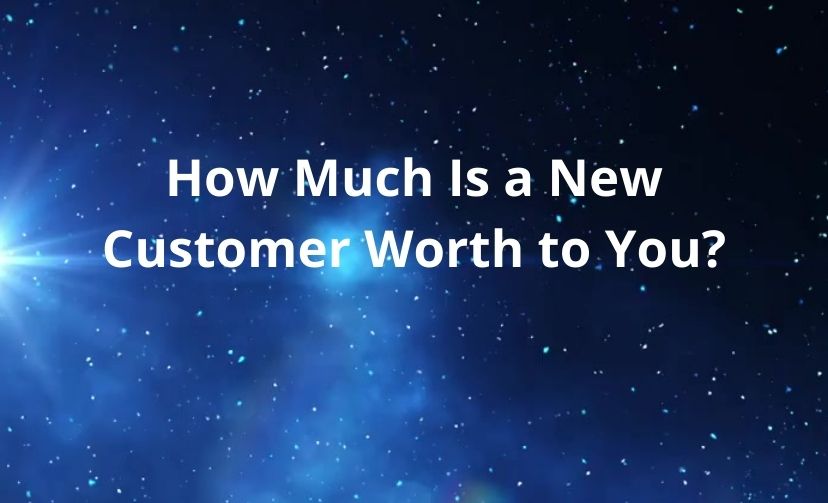One of the most difficult questions my clients wrestle with is, “How much is a new customer worth to you?” A customer’s value isn’t static. It can shift based on economic factors like GDP or inflation, and also as your business model evolves.
It’s a challenging question, but one that you absolutely must be able to answer in order to strategically set a marketing budget and evaluate a campaign’s success. That means being able to identify a metric that you’ll use to know how much you’re willing to spend to acquire a new customer. Keep in mind that the metric may need to be revisited from time to time.
I like to identify a customer’s worth in two parts:
- Initial contract value or average cart price.
- The lifetime value of that customer, which consists of recurring revenue-potential services like software, subscriptions, professional services, upsell opportunities, and referrals. For example, if you’re selling a commodity like tissues, the initial value of a new customer buying a box isn’t much. Still, the lifetime value of a loyal customer who will purchase your brand over the next twenty years adds up.
The next step is to ask yourself this: “Out of all the opportunities I have to sell products or solutions, what percentage of the time do I ‘win’?” This number becomes your conversion rate.
Now, the fun begins. How much money does your business want to make this quarter or this year? With some simple math, you’ll be able to determine how many leads you’ll need to achieve your goals based on current knowns.
Here’s an example: Based on my current website traffic and sales processes, I know that, out of 100 leads received in Q3, we can acquire 10 new customers or 10%, and they will generate $100,000 in new business. So, how much am I willing to spend to acquire those 10 customers? If I’m comfortable spending $1,000 per customer at the current conversion rate, that would allow marketing to spend $100 per qualified lead.
Once you have that metric in place, you’ll want to determine the appropriate marketing mix to generate those 100 qualified leads. One of the most common mistakes businesses make is evenly distributing their total marketing budget over a specific period of time.
For example, if you have $10,000 to spend in Q3, it might be tempting to budget $3,333 per month to achieve your goals. In many industries and with many target audiences, that strategy does not produce the exceptional sales you want but instead creates what’s called “the threshold of indifference.”
In my book The Covert Code: Mastering the Art of Digital Marketing, I talk about the importance of impression sharing and critical mass messaging to propel you past this threshold. Frequency matters. If your company isn’t targeting the right audience with enough impressions over a short period of time, you’ll never be “relevant.” Your ads will be overlooked or simply forgotten.
The better strategy is to front-load your marketing efforts, with the goal of reaching scale by driving as much high-quality traffic to your site as possible and then allocating funds toward robust remarketing.
Marketing professionals know that “it takes 7x to sell.” With so much competing noise in a consumer’s daily journey, your messaging needs to be compelling and frequent to ensure that you’re moving the audience through the purchase funnel.
The good news is that, with the advent of programmatic digital marketing, business owners now have the flexibility to achieve their goals at a fraction of the cost of traditional marketing by targeting the right customer at the right time with the right message.
With the correct tools, a realistic target, and the flexibility to pivot when necessary, you can ensure that your digital marketing is strategic and successful.
And it all starts with knowing how much your customer is worth.
Written by Anna Covert, Originally Posted on Forbes.

